Rice is such a staple in Costa Rican cuisine—we literally eat it every single day. And here’s the funny part: when it came time to show you how to make rice in the following video, I realized I had never actually followed a recipe in my life. I learned from my mom, my aunts, and many other incredible women, but always by watching, never by measuring or reading instructions. Rice, for me, was something you felt in the moment.
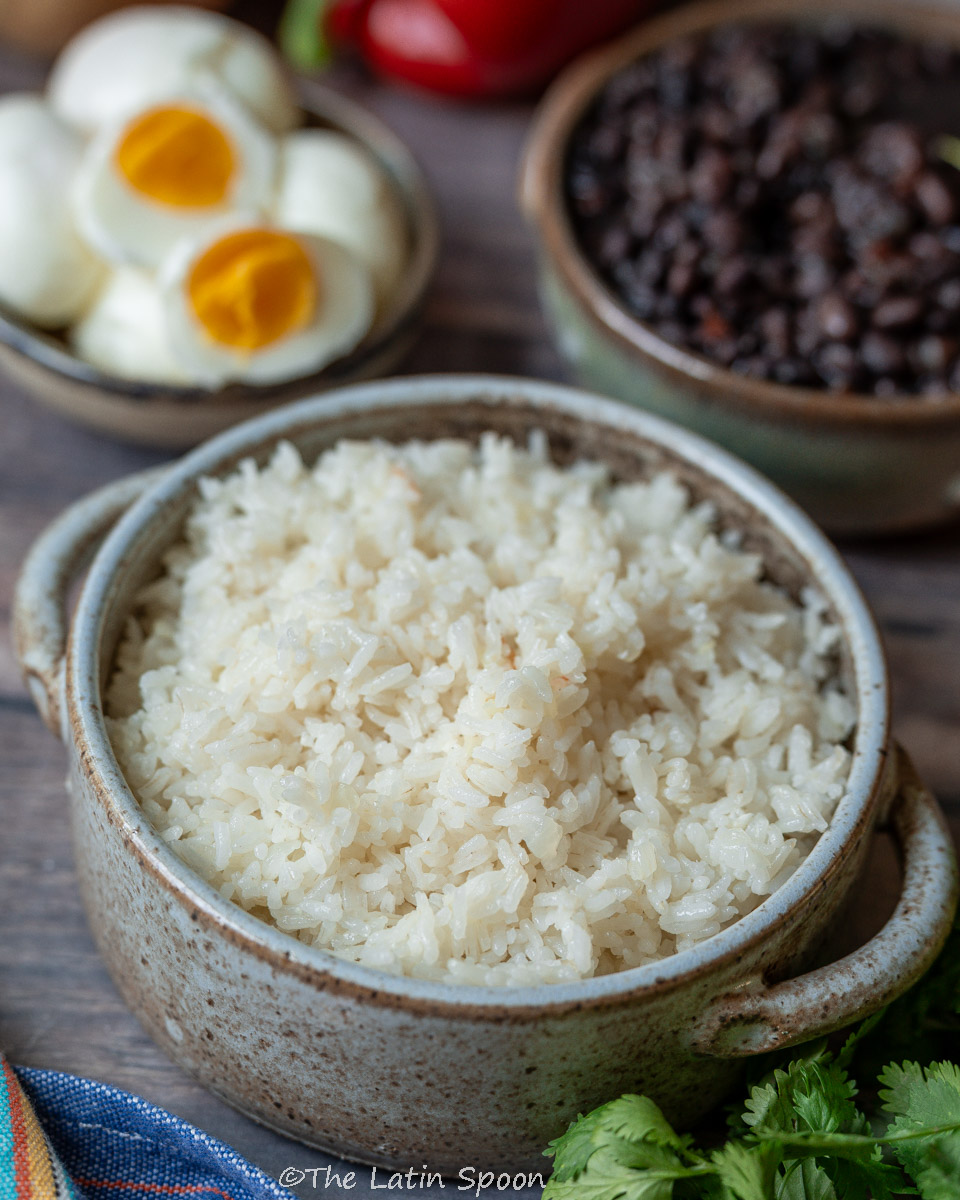
So when I sat down to write this recipe for you—to give you my formula for perfectly fluffy white rice—I had no idea where to start. It took me four tries to make rice while teaching step-by-step exactly what to do. And in the process, I discovered a few things you might not expect—like why the 2:1 water-to-rice ratio doesn’t always work and what really makes rice turn out light and fluffy.
One of the most common questions I see online is white rice versus brown rice. In Costa Rica, we almost always choose white rice—it’s simply part of our daily table and traditions. Brown rice is much less common, and when it does appear, it’s usually for specific diets or health trends. In this post, though, I’m focusing on the classic white rice that pairs perfectly with black beans, picadillos, and just about every Costa Rican meal.
💡 Tips for Perfectly Fluffy White Rice
- Start by rinsing your rice. This step is not mandatory, but when you do it, you remove the starches that make rice sticky once cooked. If that’s the consistency you’re aiming for, then don’t rinse your rice—but if you want light, separate grains instead of one big clump, rinse it 3–4 times or until the water runs clear.
- Always add hot water to your pan. This speeds up the cooking process and allows the rice to start cooking immediately after you add the water. If you add cold water instead, the stove will have to work harder to heat it up before cooking begins, which can result in mushy rice.
- Avoid adding ingredients that could stain your rice, such as cilantro or green and red bell peppers. While these add great flavor, their color will leach into the water as they cook, staining the rice. If you want that color, go for it—but if you’re looking for classic white rice, skip these ingredients.
- Do not stir constantly or remove the lid while cooking. Each time you lift the lid, the temperature inside the pan drops, and every stir introduces cool air—both of which can lead to mushy rice.
- If you don’t want to manage a pan on the stove, I highly recommend getting a rice cooker. Modern rice cookers do an excellent job, and they’re so advanced that you can set them and walk away—or simply focus on cooking the rest of your meal.
Ingredients for White Rice-Costa Rican style
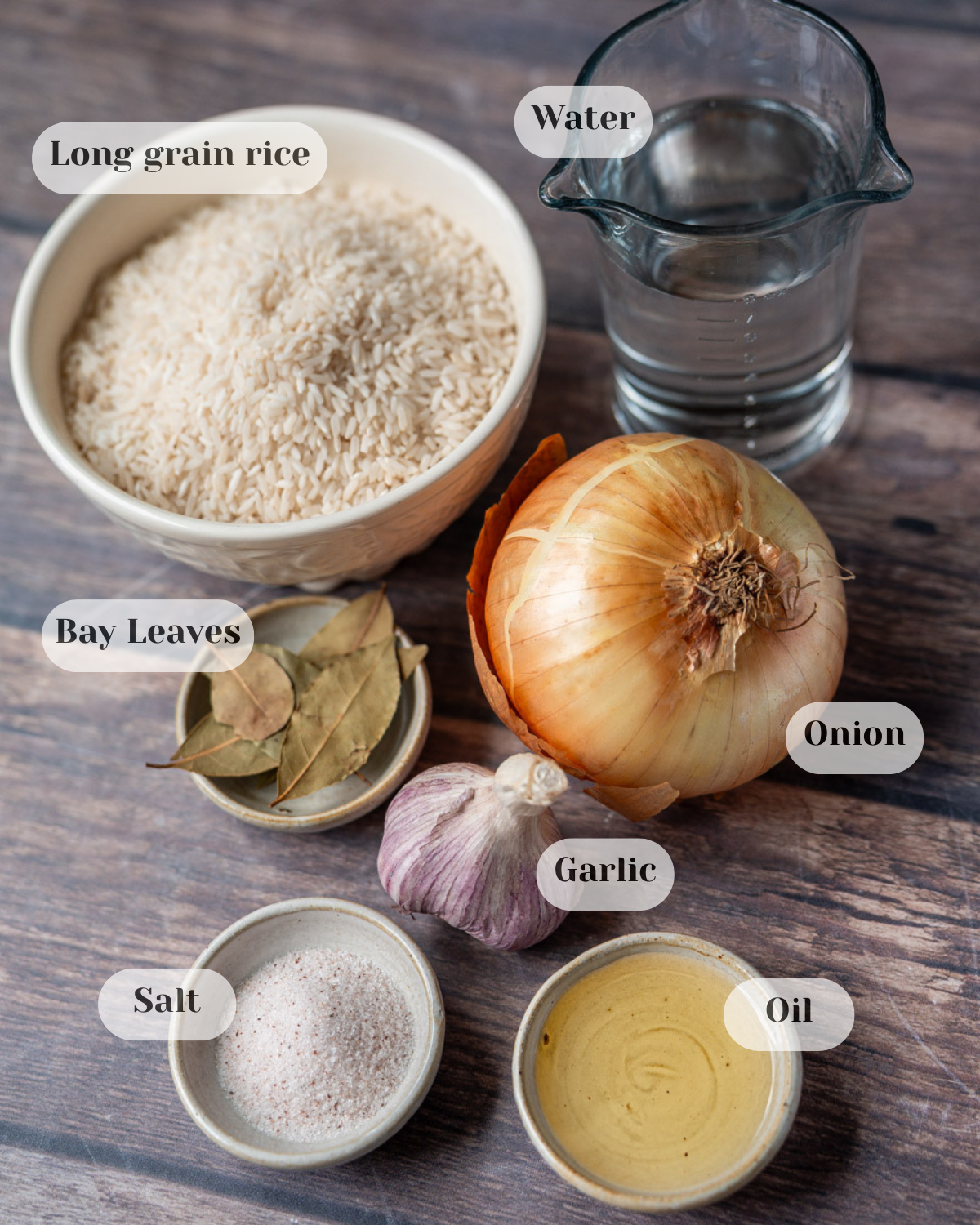
🍚 Rice
For this recipe, I’m using long-grain white rice—the kind most commonly cultivated and enjoyed in Costa Rica. Rice is such an essential part of daily life there that it’s included in the canasta básica, or essential food items. (Fun fact: the cost of these essential items even plays a role in determining the country’s minimum wage.) And of course, the other staple is beans—our constant companion to rice. In fact, we almost always eat them together.
In Costa Rica, rice isn’t just rice—it’s categorized by grain quality. At the top, you have 90% grain rice: beautiful, high-quality grains that stay whole and fluffy after cooking. This type is a little more expensive because 90% of the grains are intact, while only 10% are broken. Then there’s 70–90% grain rice, which is considered medium quality. Finally, you have low-quality rice, where more than 30% of the grains are broken.
Now you might be thinking, does broken rice really make a difference? The truth is, yes. High-quality rice doesn’t just look more appealing on the plate—it also tastes different. Part of this comes down to processing. Brown rice and white rice actually start out the same, but white rice has been milled to remove the bran layer. In that process, some grains break, and the degree of milling changes the balance of protein, fat, and starch in the rice. Those subtle differences in composition can noticeably affect both flavor and texture.
Rice is naturally gluten-free and pairs well with almost any dish. I found my long-grain white rice at the Mexican store, but if it’s hard for you to find one nearby, I’ve also tried this rice and it’s absolutely delicious.
🧈Oil
To cook white rice, you really only need rice and water (which you could also substitute with vegetable or chicken broth). Just those two ingredients will do the job. But to make authentic Costa Rican fluffy white rice, you also need to add oil.
Why oil? Because coating each and every grain with oil helps prevent them from sticking to each other—or to the pan. The type of oil doesn’t really matter; it could be vegetable, avocado, or coconut oil, to name a few. I don’t recommend using olive oil for two reasons:
- While it’s delicious, it’s not a typical Costa Rican flavor.
- It has a low smoke point, so it burns faster than other oils and can give the rice a slightly bitter taste.
🧅🧄 Onions and garlic
Again, not a must-have—but adding these two will definitely make it Costa Rican style.
🌿 Bay Leaves
I haven’t seen many Costa Rican chefs or home cooks add bay leaves to rice, but we definitely use them a lot—especially in caldos (broths), stews, and definitely when making beans (stay tuned, that recipe will be available next week!). Since we use bay leaves so often in other dishes, I started adding them to my rice many years ago, and I absolutely love the flavor they bring. It’s not a typical Costa Rican combination, but hey—I’m Costa Rican, so I’m covered. 😉
🧂 Salt
Ahh! Not much to say about this, other than I only eat unsalted rice when I go to Asian restaurants and similar places. Costa Rican white rice will always be cooked with salt.
💧 Water
Please don’t follow the 2:1 ratio when cooking rice. It means adding 2 cups of water for every cup of rice, and that almost always leads to mushy rice. Unless that’s the texture you want, it’s better to adjust the water depending on the variety of rice you’re using. By following my method—adding only 1 ½ cups of water per 1 cup of rice and then adjusting the water later—you’ll always end up with fluffy white rice. I explain more about this process in the step-by-step photos below.
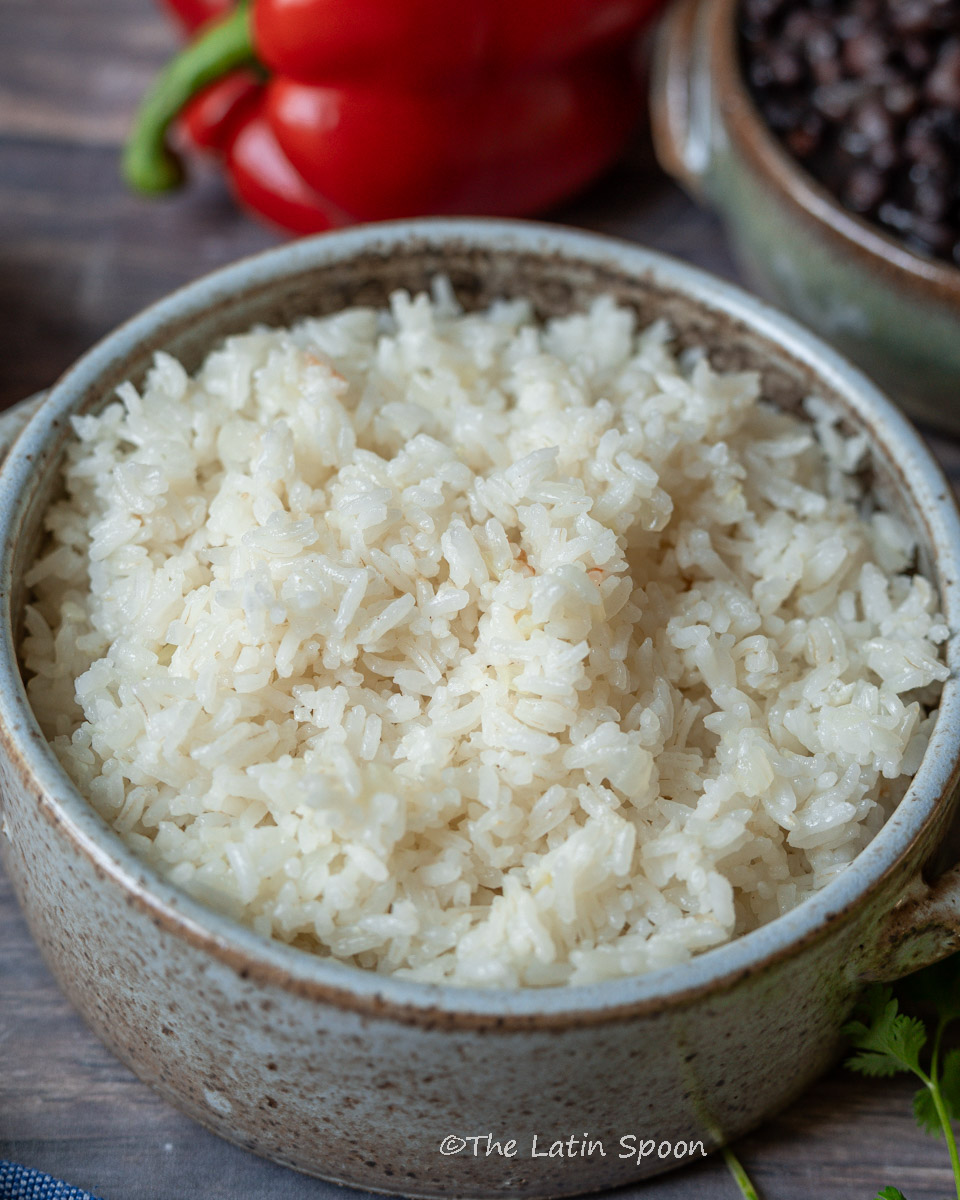
Step-by-Step Photos to Achieve Perfectly Cooked White Rice
Follow the step-by-step photos below to make perfectly cooked rice, every time.
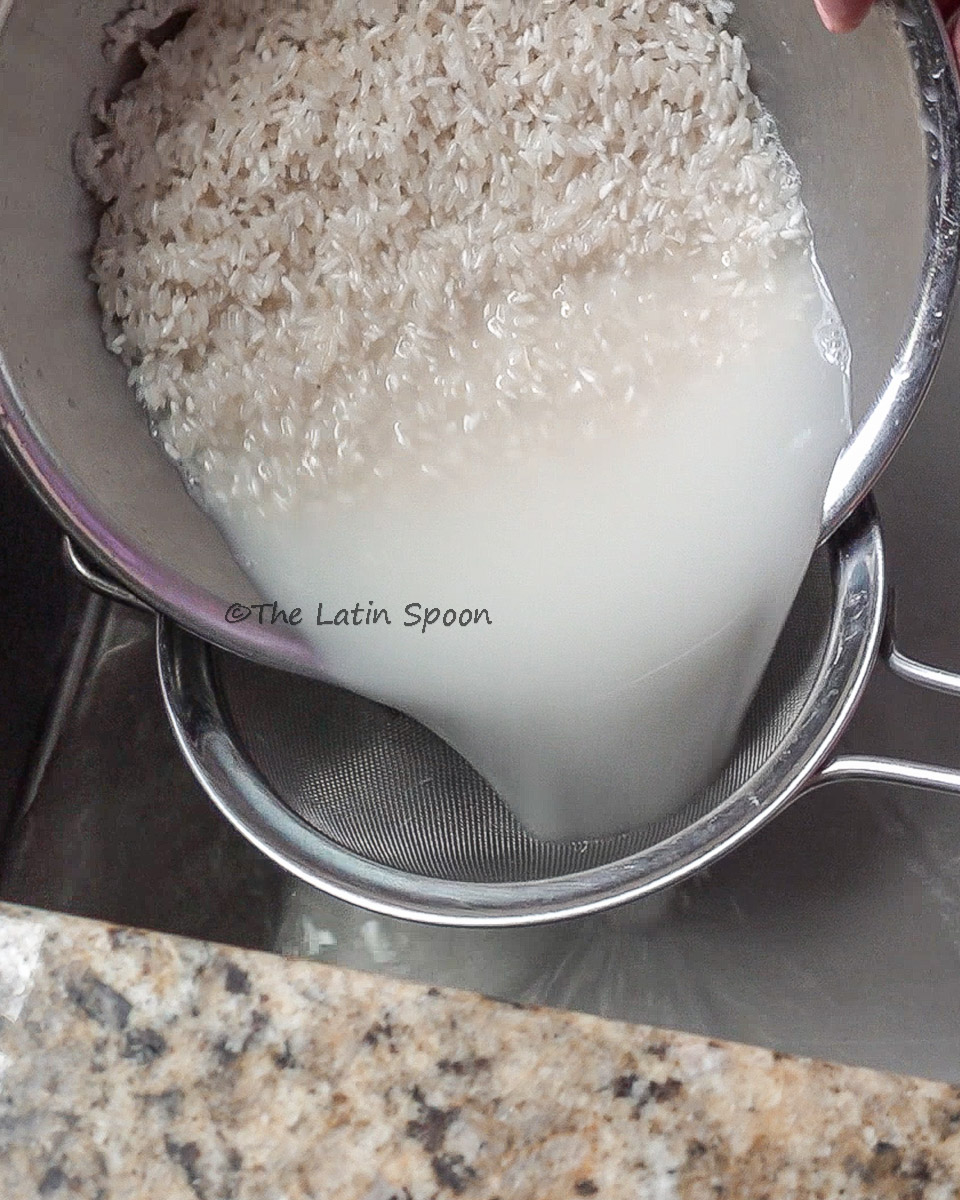
Step 1: Rinse your rice
Add plenty of water to a bowl of raw rice. Gently stir to wash away the starches. Drain and repeat 2–3 times, until the water runs clear.
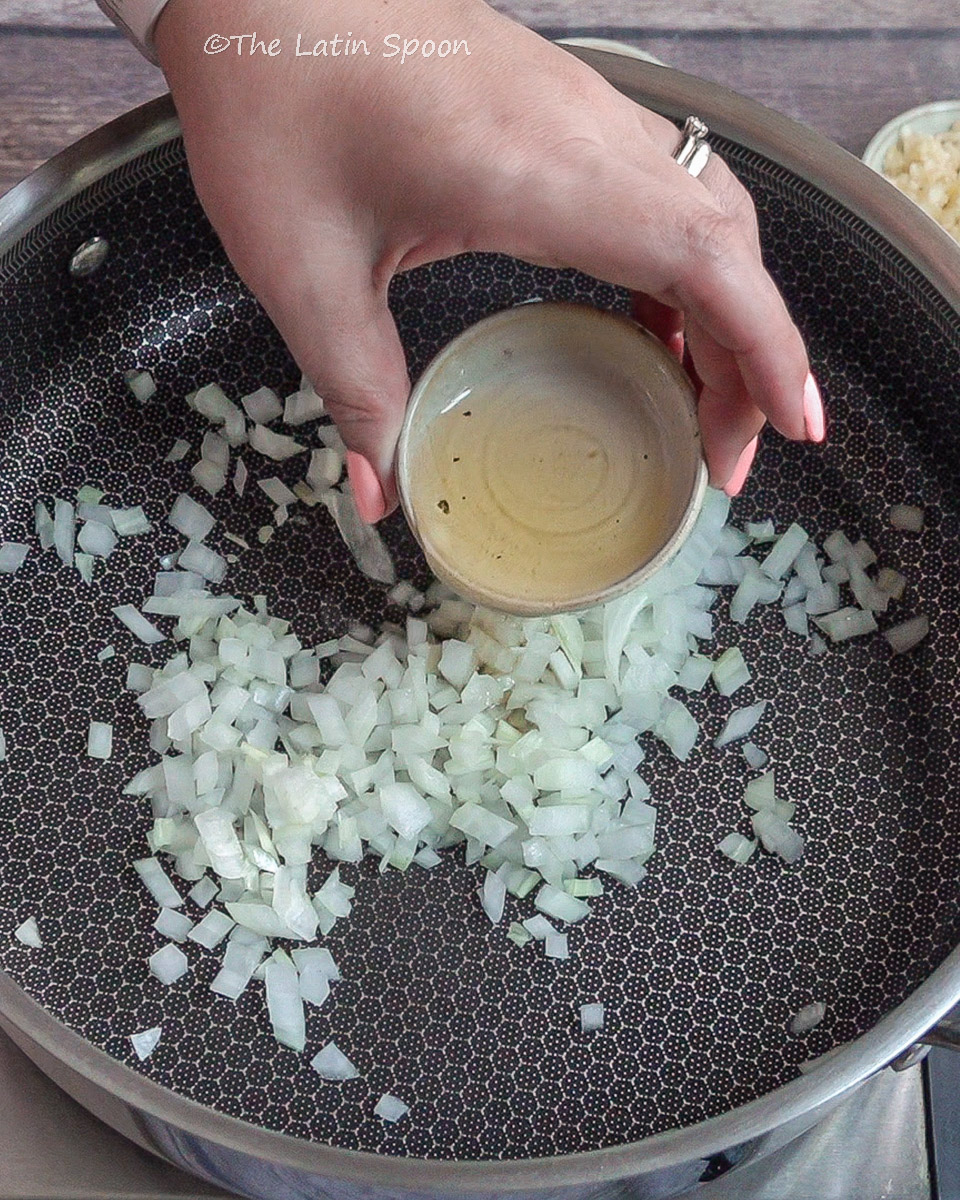
Step 2: Sauté your vegetables
Heat the oil over medium heat. Add the onions and garlic, and cook gently—don’t let them burn. Meanwhile, bring plenty of water to a boil.
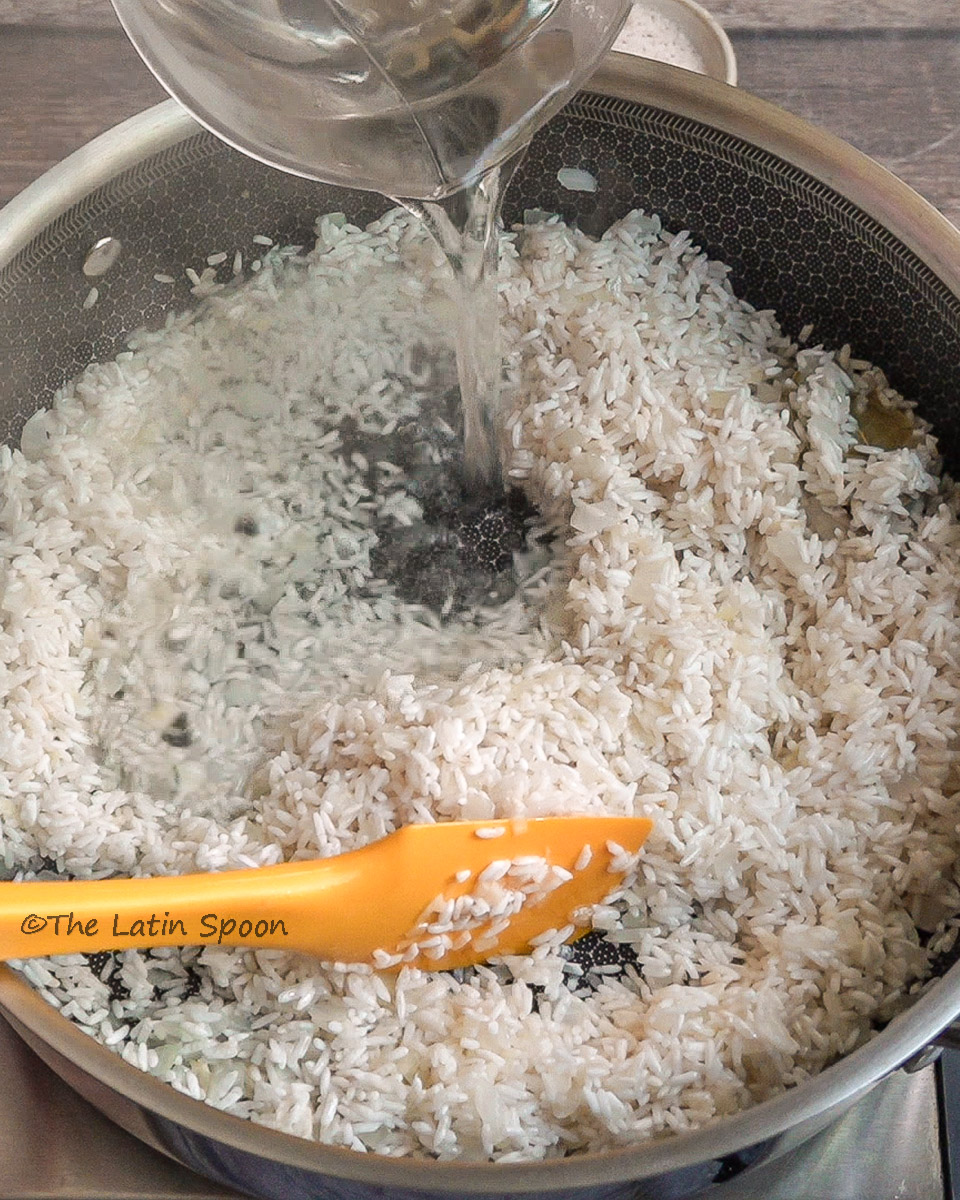
Step 3: Add Rice and Seasonings
Add the rice, hot water, salt, and bay leaves. Give it a quick stir, then cover with a lid.

Step 4: Cook the Rice
Cook for 10 minutes, or until the water has evaporated and the rice has absorbed the liquid. Do not uncover the lid during the cooking process.
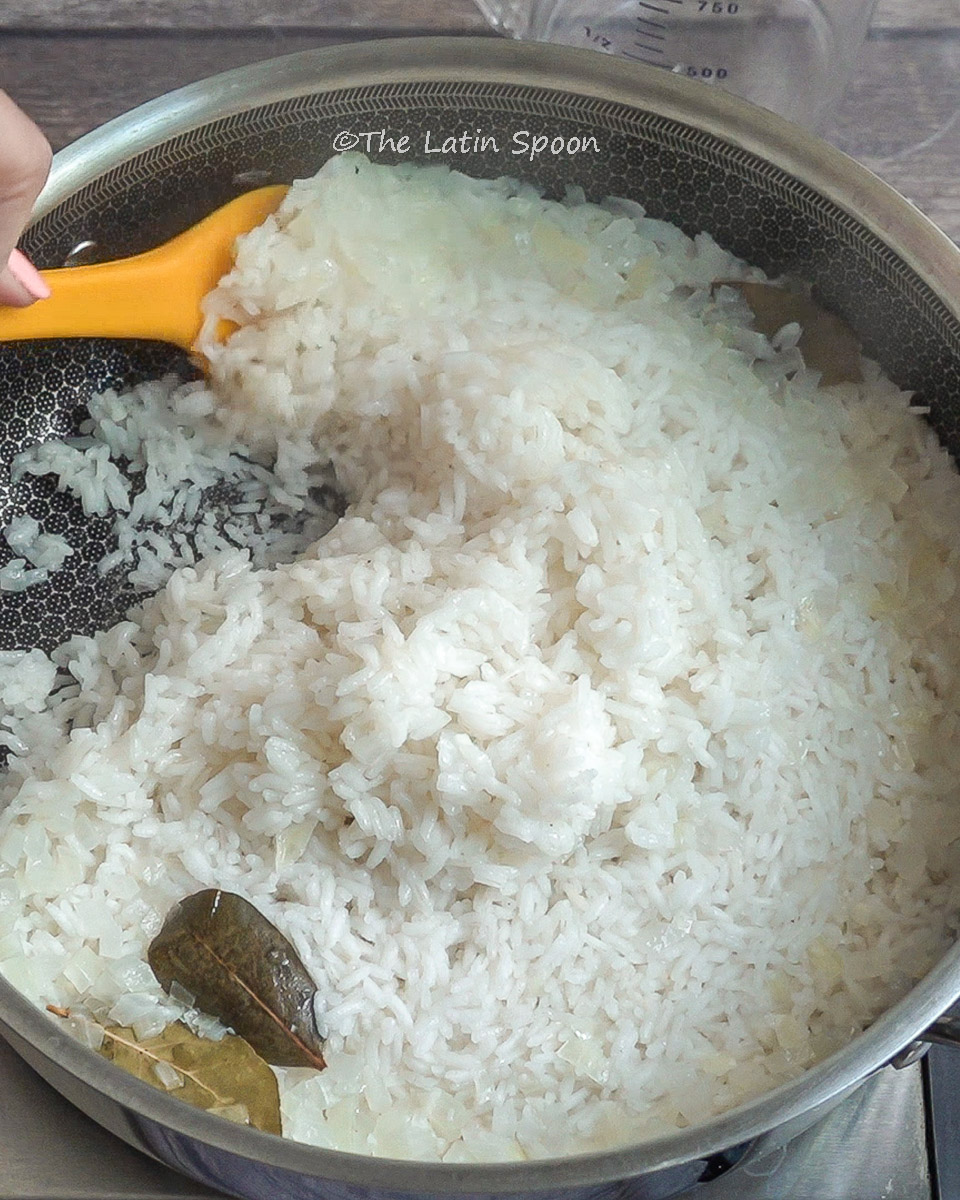
Step 5: Stir and Adjust Seasoning
Gently stir the rice, taste it, and season according to your liking.
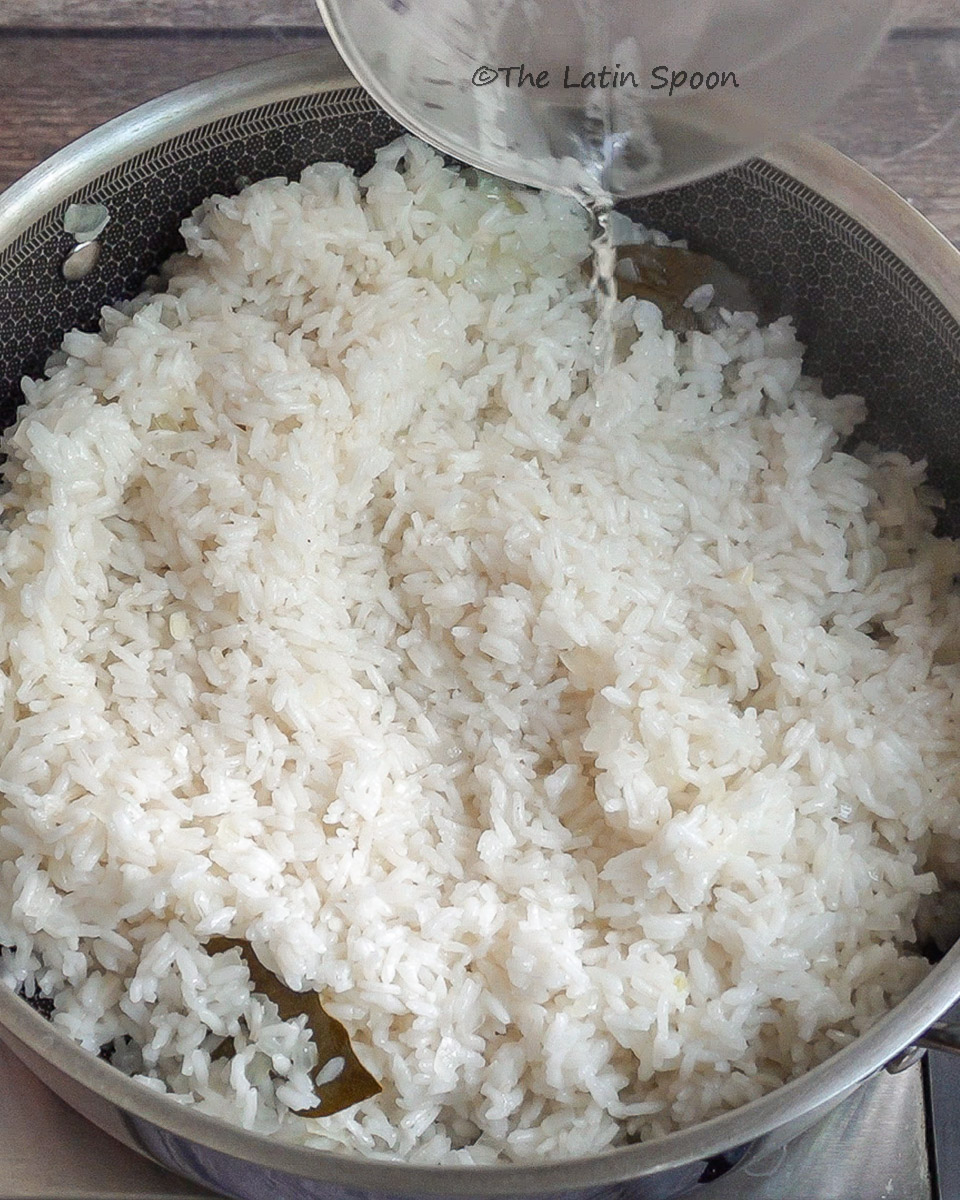
Step 6: Add a Second Round of Water
Add no more than ¼ cup of water, then cover again with the lid. Cook for 10 more minutes, or until the rice is fully cooked.
Frequently Asked Questions About Fluffy White Rice
If you can’t find long-grain white rice, you can substitute it with other varieties like jasmine, basmati, or even short-grain rice. Each type of rice has its own unique flavor profile—they’re all delicious, but they will give the recipe a slightly different taste. Ultimately, any of these options will still work beautifully.
Every day. There’s no other answer.
Gallo pinto (wait for that recipe—it’s coming up).
If you’re warming it on the stove or in the microwave, add a few drops of water first, then heat until it reaches the desired temperature.
Yes, you can. Although I would follow the rice cooker’s instructions for the amount of water to add.
It can last up to 10 days, but I don’t know precisely—mine never lasts more than 3 days. 😊
Yes, you can! I actually love to do this. I cook several cups of rice, then put them in the freezer—it thaws beautifully, and you’d never guess it was frozen.
Literally anything. Costa Ricans pair it with beans, lentils, potatoes, chicken, pork, salads, and more. We even make it into a dessert—have you ever tried rice pudding?
🌿 Bringing It All Together
And that’s it—my way of making perfectly fluffy Costa Rican white rice. It’s simple, comforting, and such a big part of our table. Whether you pair it with beans, serve it alongside your favorite dish, or just enjoy it on its own, I hope it brings a little taste of Costa Rica to your kitchen.
Eat it with this delicious Yucca Flower Picadillo.
Oh, and speaking of beans—don’t miss next week’s recipe for Black Beans Costa Rican Style. They’re the perfect match for this rice, and together they make one of the most loved combinations in our cuisine. Make sure to check out my Gallo Pinto recipe, where they become one of Costa Rica’s most beloved meals.
Besitos (kisses),
Mara
Fluffy White Rice Recipe
Equipment
- Large Pan
- Knife and cutting board
- Rice Cooker Optional
Ingredients
- 2 cups long-grain white rice
- 2 tablespoons oil
- ½ cup chopped onion
- 2-3 bay leaves
- 2-3 garlic cloves
- 1 ½ teaspoons salt
- 3 ¼ cups boiling water
Instructions
- Add plenty of water to a bowl of raw rice. Gently stir to wash away the starches. Drain and repeat 2–3 times, until the water runs clear.
- Warm up a large pot over medium heat. Once hot, add the onions and oil; cook for 2–3 minutes, or until the onions turn translucent. Add the garlic and cook for about 30 seconds—don’t let it burn. Meanwhile, bring plenty of water to a boil.
- Add the rice, hot water, salt, and bay leaves. Give it a quick stir, then cover with a lid.
- Cook for 10 minutes, or until the water has evaporated and the rice has absorbed the liquid. Do not uncover the lid during cooking.
- Gently stir the rice, taste it, and season according to your liking.
- Add no more than ¼ cup of water, then cover again with the lid. Cook for 10 more minutes, or until the rice is fully cooked.
Video
Notes
- Store leftover rice in an airtight container in the fridge. Let it cool completely before refrigerating to avoid excess moisture.
- Freeze cooked rice in an airtight container or freezer bag. Thaw overnight in the fridge or reheat directly from frozen—add a splash of water and cover to keep it fluffy.
- When reheating, add a few drops of water and cover to help restore moisture.
- For a richer flavor, substitute part or all of the water with chicken or vegetable broth.


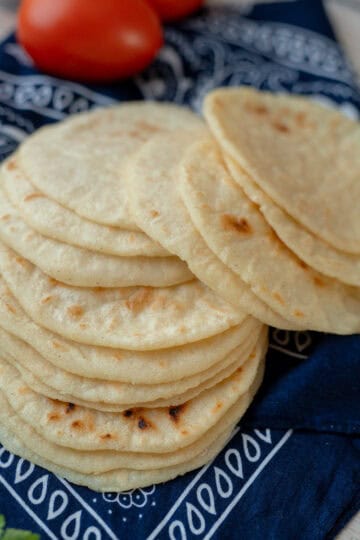

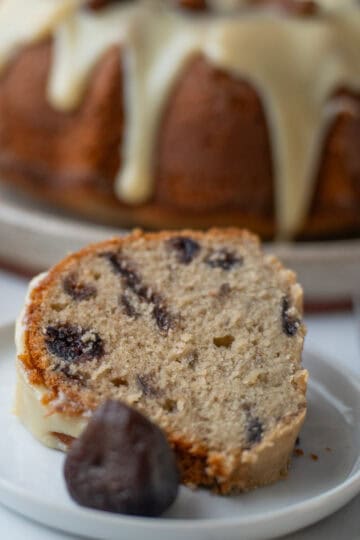
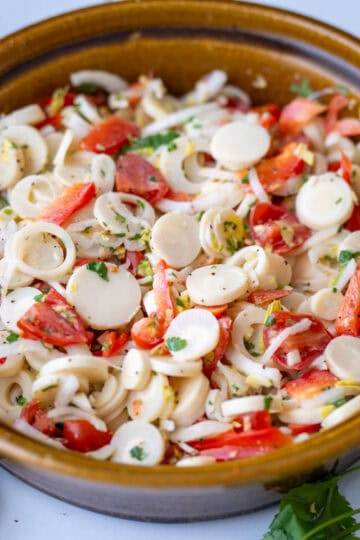
Leave a Reply